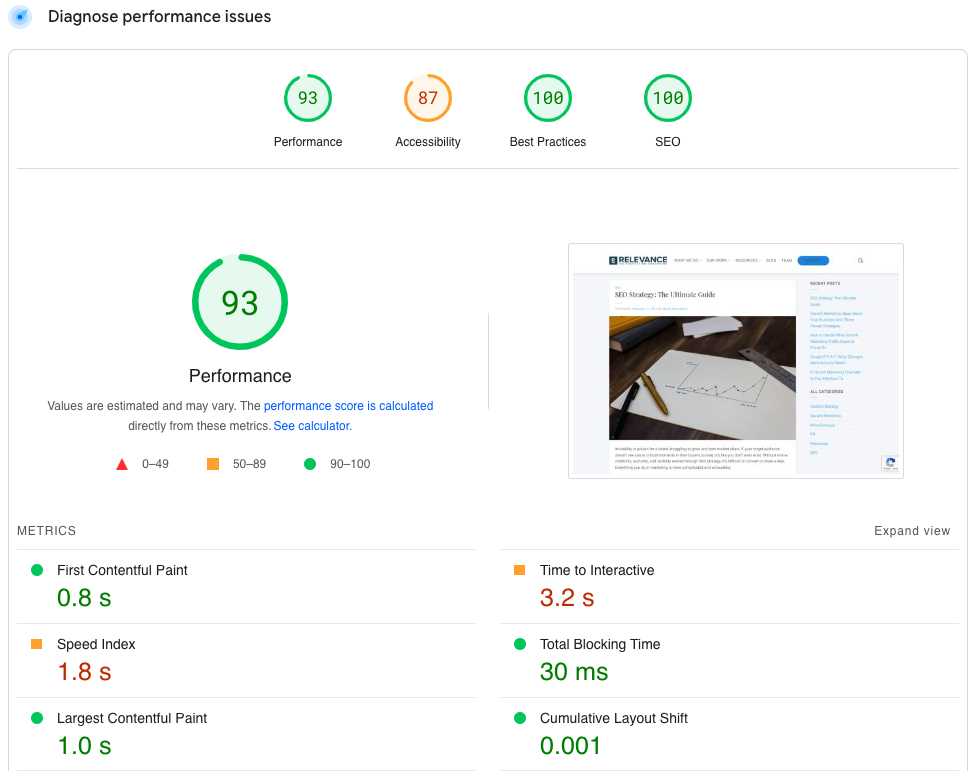If you’re a marketer focused on content creation, the idea of optimizing the technical details of your content might make you freeze like a deer in the headlights. But creating amazing content without optimizing it for search is like cooking a delicious meal and neglecting to give your guests any silverware.
Technical SEO and on-page SEO are the forks and knives that search engines need to find and rank your content. And higher rankings mean more traffic for your site.
SEO is the process of optimizing your website content to improve its ranking and appearance in search engine results. What is SEO ranking and how can you build an SEO strategy that boosts your content to the top for the right searches?
There are four types of SEO: on-page, technical, off-page, and local. If you’re newer to SEO, it makes sense to start with the two types you have the most control over - technical SEO and on-page SEO. Let’s take a look at both and explore some best practices.
Technical and on-page SEO are the two types of SEO that happen on your own online real estate. That means you have the most power to impact them and can start making improvements today.
Technical SEO involves optimizing the technical infrastructure of your site. The importance of technical SEO is twofold, because it:
Like technical SEO, on-page SEO also improves user experience. It involves creating high-quality content focused on a keyword or closely-related group of keywords. Because search engine algorithms are better than ever at identifying valuable content, on-page SEO is foundational to your content marketing strategy.
There are hundreds of optimizations you could make to perfect your website’s infrastructure. For many marketers, a technical SEO audit feels like a daunting task. But there are a few technical SEO factors that are often “quick wins” for first-time auditors.

Once you’ve fixed existing technical issues, it’s easier to keep them in line for future content.
On-page SEO starts with thorough keyword research. You can research keywords for your content with a few simple (and free!) tactics:
Once you’ve identified a target keyword for your content, it’s time to focus on quality. High-quality content educates and entertains your reader. It includes a mix of internal and external links. While the content can be thought-provoking or challenging, the language shouldn’t be. Keep things simple, scannable, and easy to read.
Weave your keyword naturally into your content. If you’ve done your research and selected an appropriate keyword, things should fall into place. Your keyword should appear in the following areas:
It’s important to review all these elements before publishing your content. Tools like the Yoast WordPress plugin can help you systematize this process.
Since we’ve covered on-page SEO, it’s worth answering: What is off-page SEO? This part of your SEO strategy is more akin to PR - but it does integrate elements of on-page and technical SEO.
A search engine’s goal is to show users credible and authoritative content in their results. One way Google judges this is backlinks - links to your content from other sites. Off-page SEO involves creating linkable content and then deploying a backlink strategy.
Earning backlinks is a relational task that requires getting into the heads of publishers and other marketers. Start by identifying trustworthy, popular sites that your target audience is visiting. Track down the person responsible for their digital content, and reach out with a backlink request. We outlined approaches and specific examples in this post, What are examples of SEO marketing?
If you’re creating content, you must understand how to get it in front of your target audience. Technical SEO, on-page SEO, and off-page SEO all work together to get your content ranking on the right keyword searches. Put it all together, and you’ll be serving up your content to potential buyers in no time.